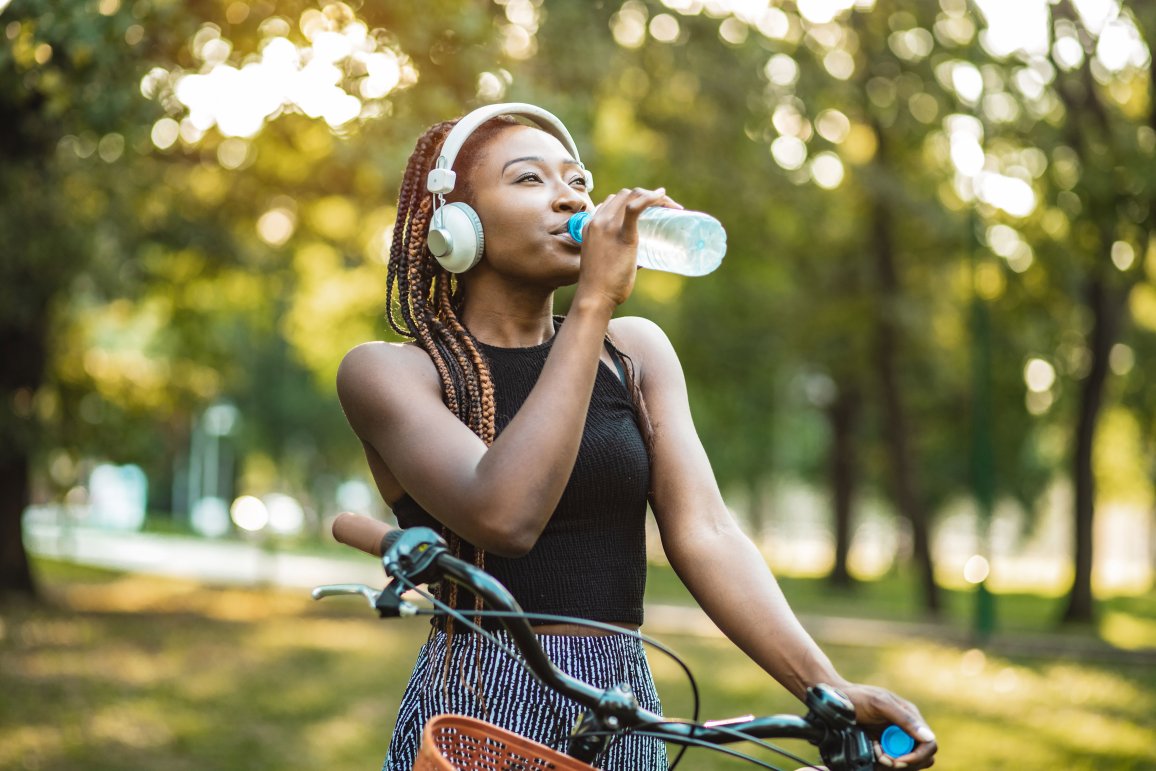PET bottles as sustainable companions
Plastic is considered an industrial material of modern times, and as beverage packaging it is also a material that corresponds to current lifestyle movements. In this way, the lightweight PET bottles stand for urban-mobile take-away consumption, which is also sustainable when disposed of correctly – because the used bottles can be recycled.

Trend packaging for modern life: PET plastic bottles are best suited to the trendy, urban lifestyle because they represent lightness, mobility and are sustainable.
Light, mobile and sustainable
On the one hand, trends express an attitude to life, on the other hand, they influence our behavior. This results in short-term hypes or long-term trends. Especially when it comes to consumption. This, in turn, has an impact on the material and design of packaging – after all, it gives the first impression of the product.
Research institutions, such as the Zukunftsinstitut in Frankfurt/Main, describe megatrends that determine the lifestyles of consumers – including urbanization, mobility and neo-ecology. Three trends that are also relevant for beverage packaging. Behind urban enjoyment is in particular simple and carefree to-go consumption. Reinforced by the trend towards mobility, which here primarily means the flexible and fast availability of products such as fast food and snacks. To this end, the neo-ecology trend focuses on mindful and environmentally conscious action. Overall, the modern and urban lifestyle can be characterized as light, mobile and sustainable. So what does this mean for beverage packaging?
PET bottles as shatterproof containers
PET bottles, in particular, reflect the lifestyle described – they represent urban take-away consumption, are light, mobile and sustainable. Their stability despite their low weight makes PET bottles a comfortable, hygienic and shatterproof companion for a mobile society that wants to enjoy on the go. At the same time, the PET bottles make a significant contribution to sustainability and the circular economy with their low CO2 emissions during production and transport as well as their good recyclability.
What about other beverage packaging?
Non-reclosable aluminum cans also stand for a lightweight, mobile and thus urban to-go product, the extraction of the raw material – bauxite – and the subsequent production of the light metal by electrolysis are considered problematic: a lot of electricity and a high use of chemicals are required, and toxic red mud and gaseous fluoride are also emitted, which lead to environmental destruction if left unfiltered. According to the Hamburg Consumer Advice Centre, even recycling is extremely time-consuming, because composites have to be separated and extra new aluminum has to be added to the secondary aluminum obtained during recycling.
Glass, on the other hand, is not suitable for carefree transport for weight and safety reasons. For trendsetters, the material may also be a bit too traditional – glass bottles were already used in the Middle Ages – but it can be easily recycled today if it is single-type. In addition, glass production requires a heat of up to 1,600 degrees Celsius, hotter than lava from a volcano, which leads to an enormous effort and a high ecological burden.
Best suited to lifestyle: PET bottles
Compared to glass, PET bottles save a lot of energy and emissions during production and logistics due to their low melting point of 260 degrees Celsius and low weight of 20 to 30 grams per bottle. Plastic also boosts material efficiency, recycling technologies and the circular economy. The thermal recycling of plastics that are not or no longer recyclable is also considered sustainable: the heat generated in this process is even equated with renewable energy in the new Building Energy Act (GEG) in Germany. And if you dispose of PET bottles correctly, you avoid waste and act mindfully. In this context, a study by the Society for Packaging Market Research (GVM) concludes that up to 20 percent more packaging would be put into circulation if 10 percent of plastic packaging were replaced by other materials. Consequently, this will not be a trend.
Do you like our texts? Perhaps even so much that you want to use them in your own media? Then please get in touch with us beforehand!
